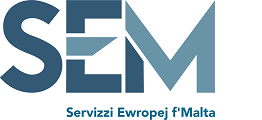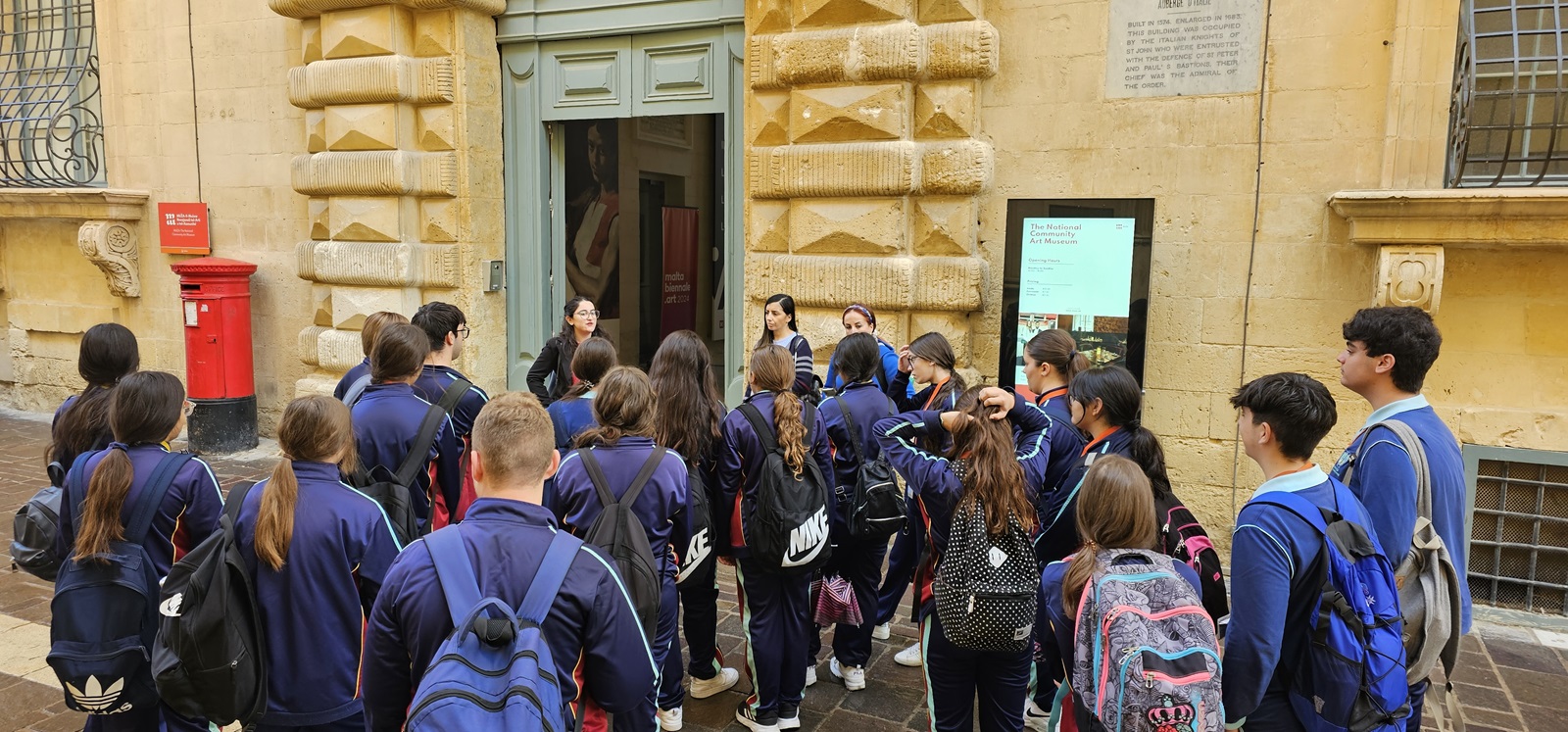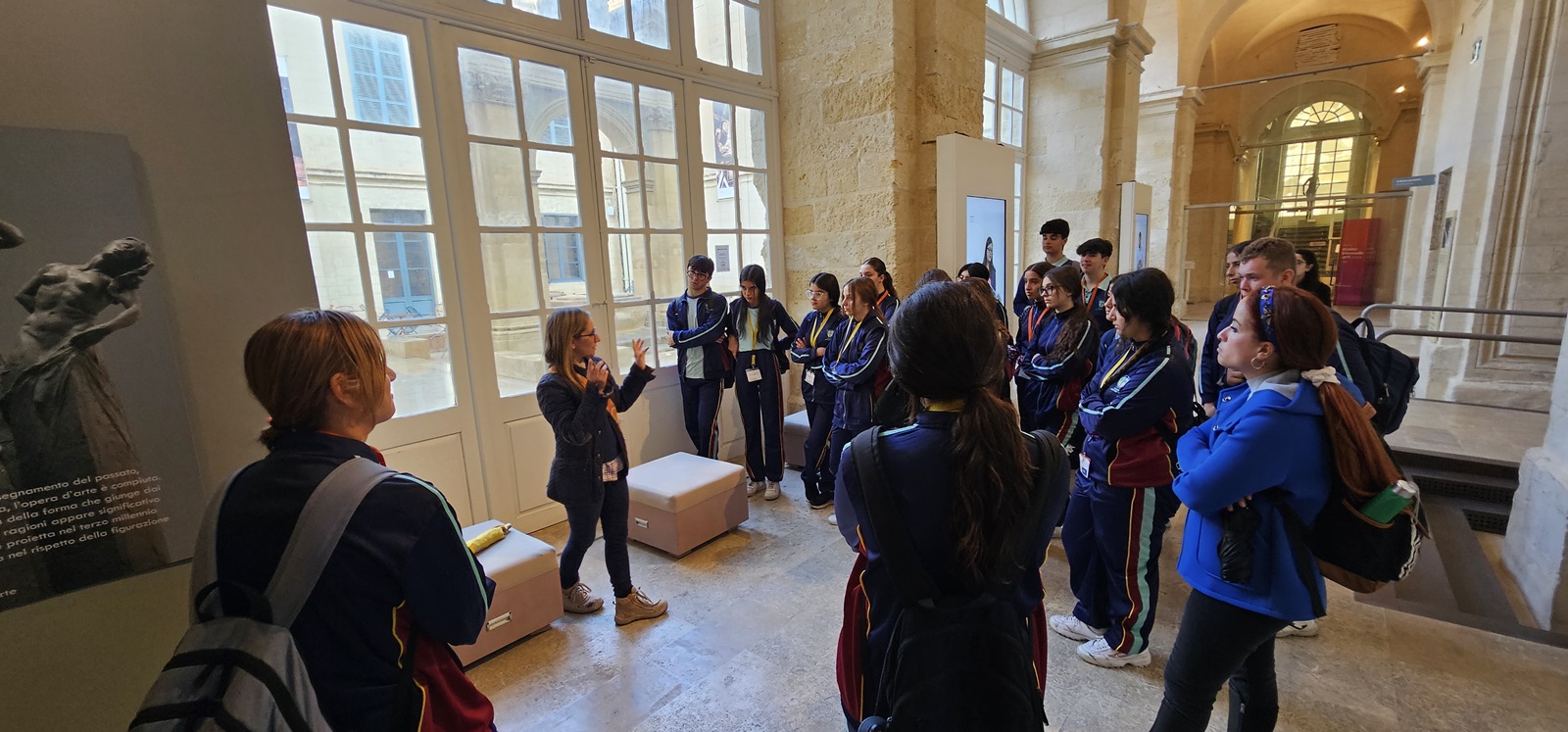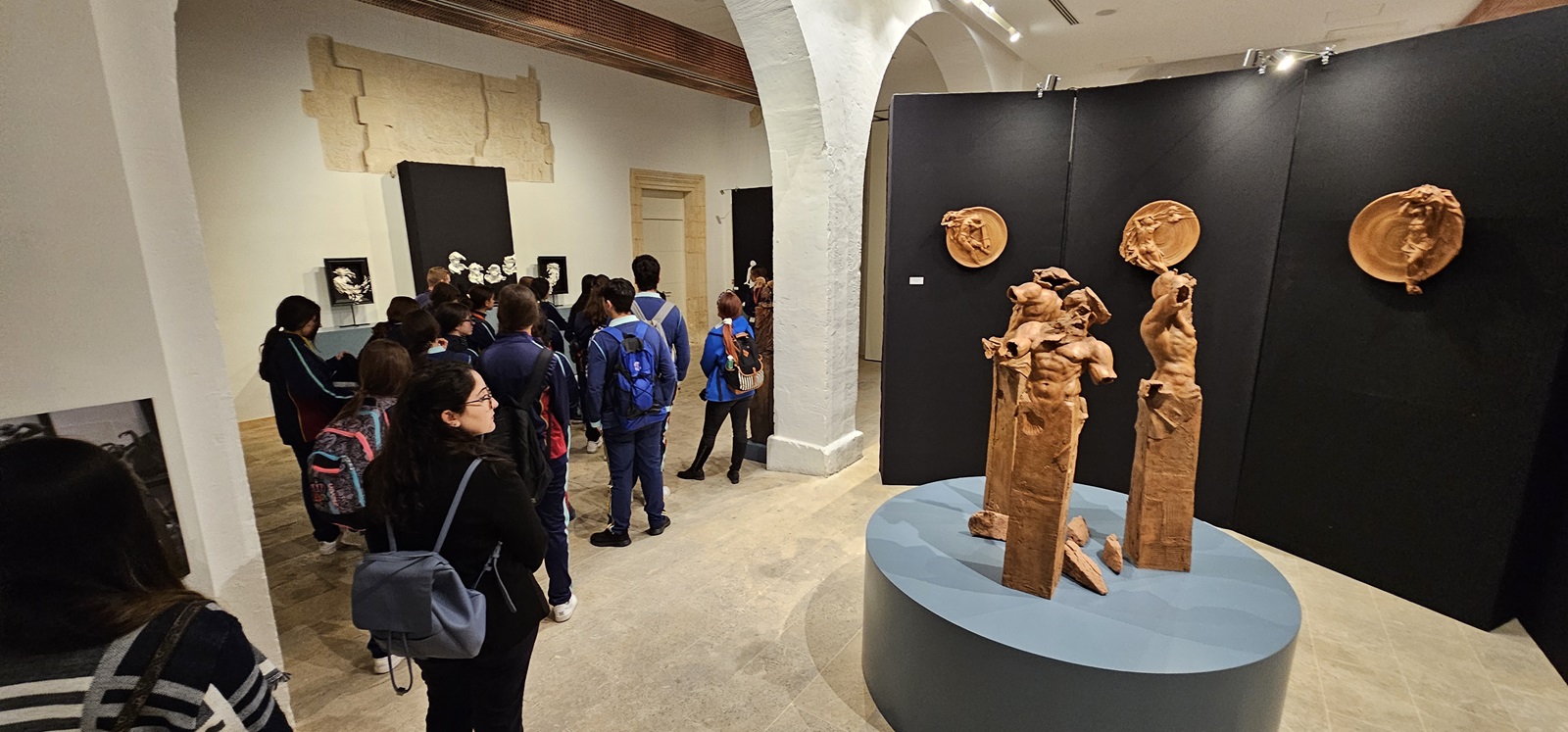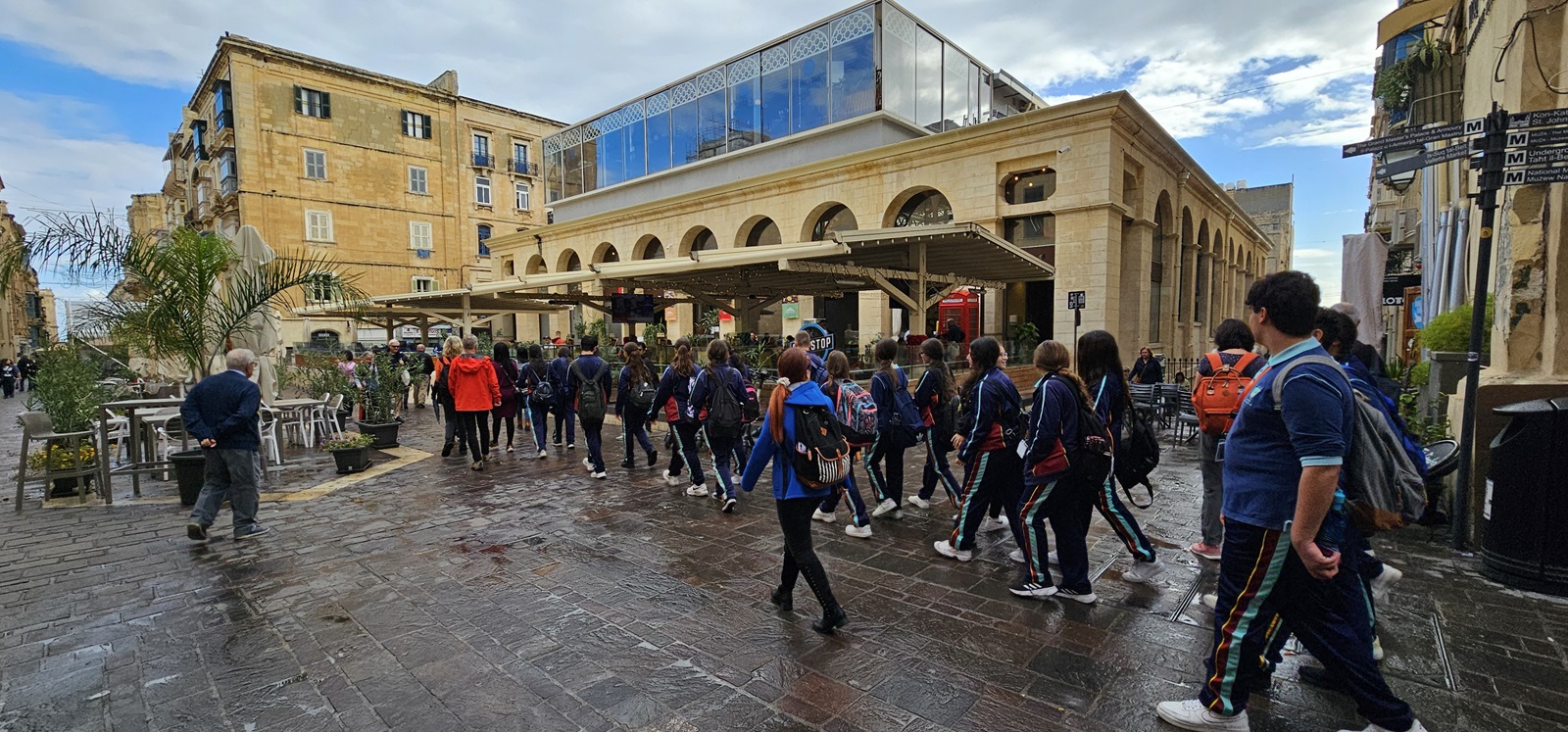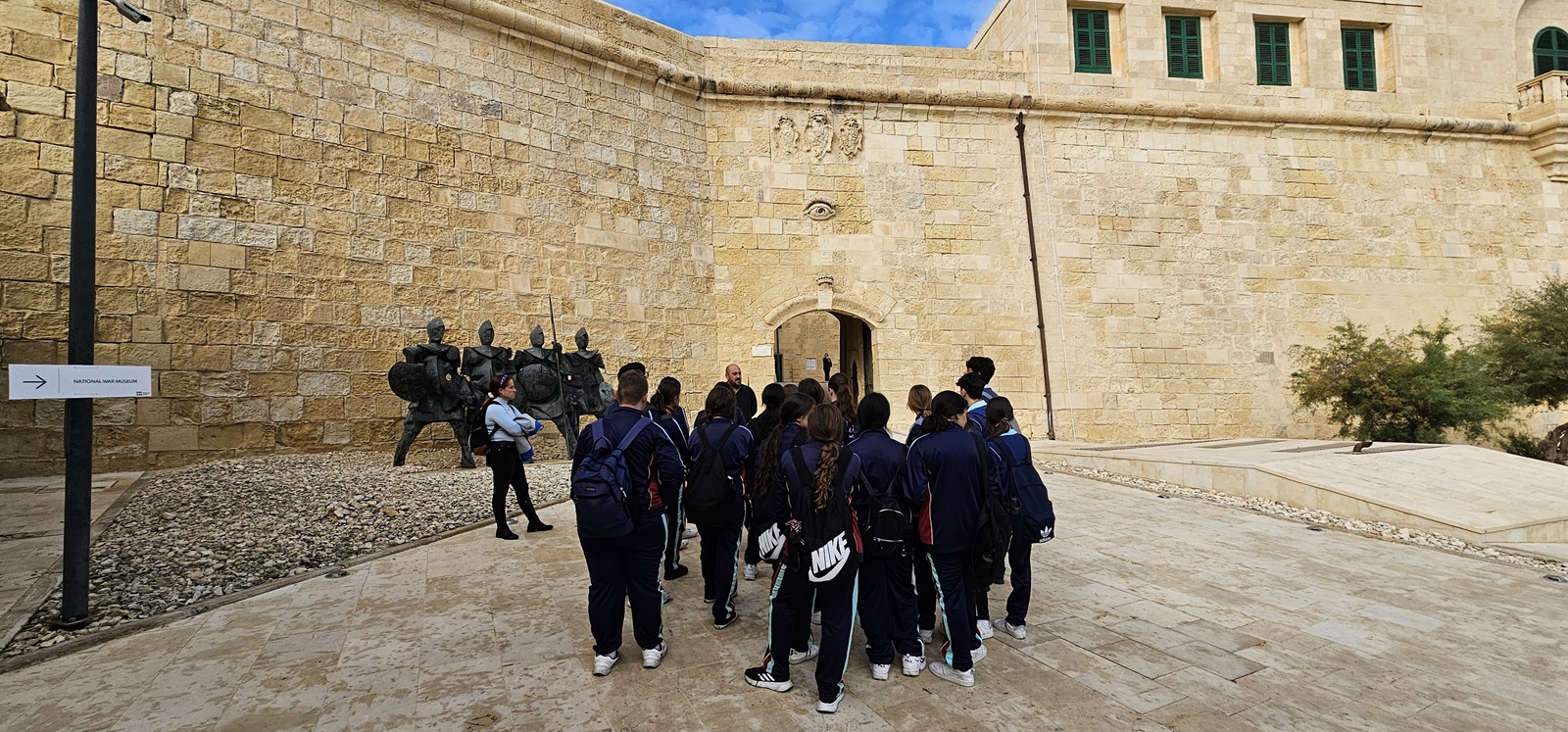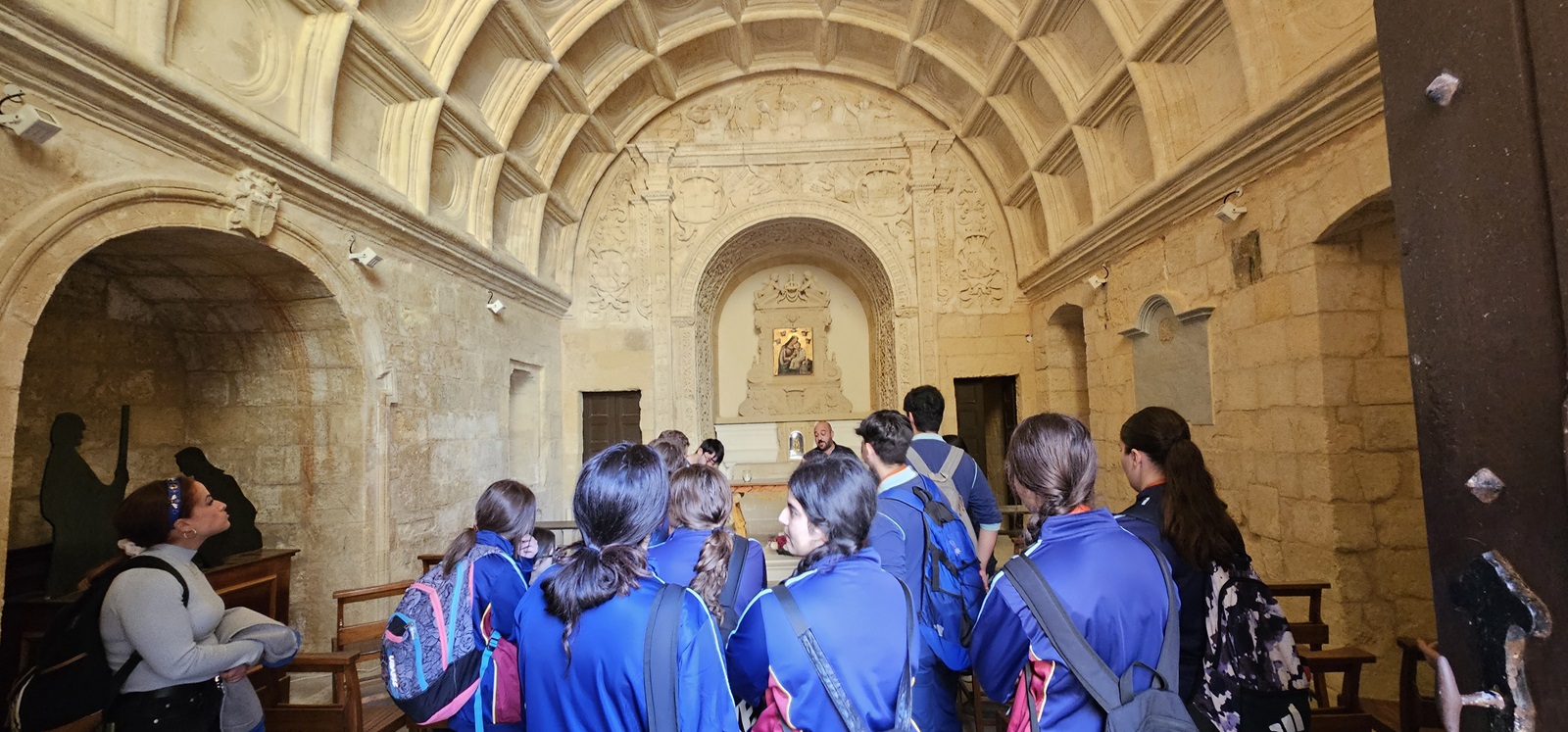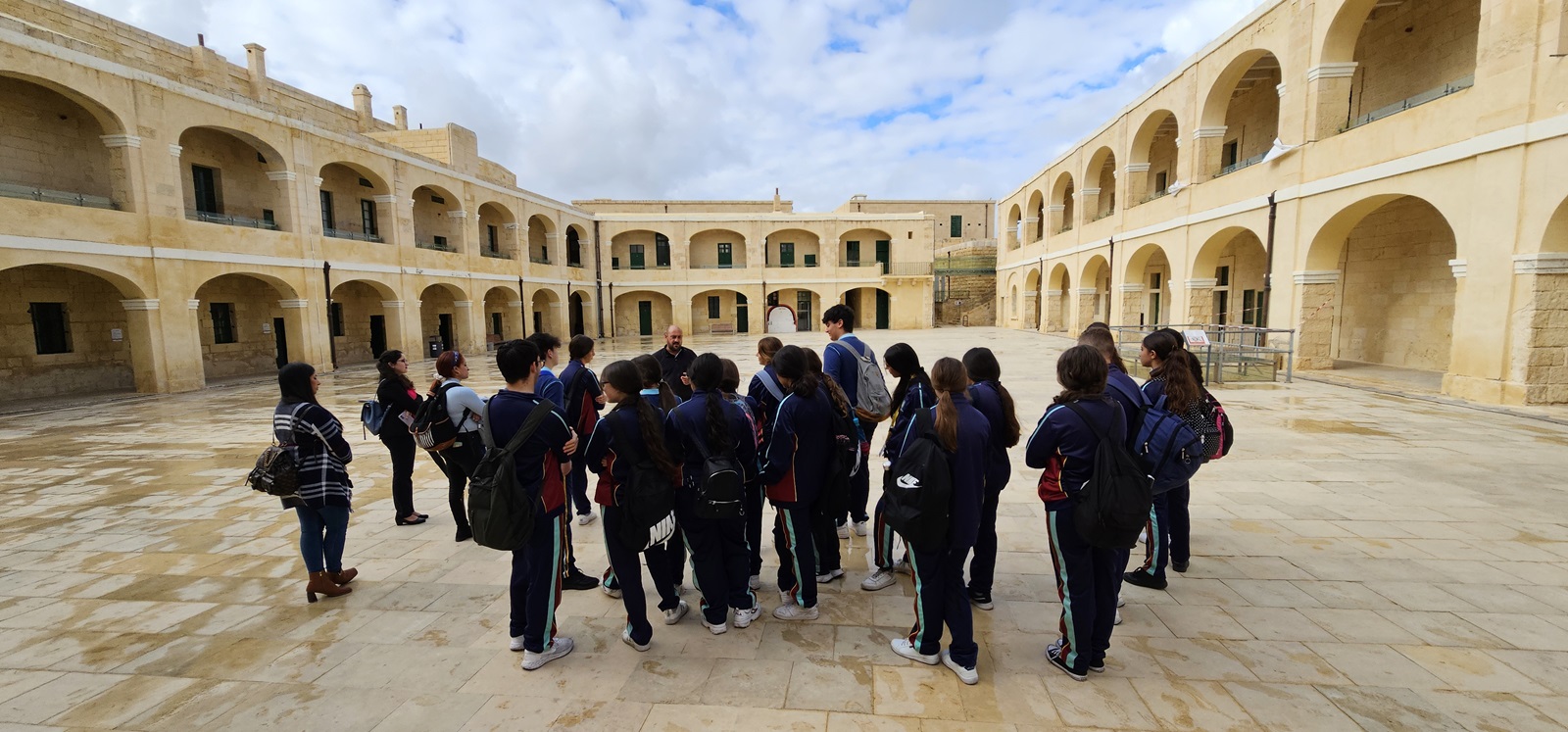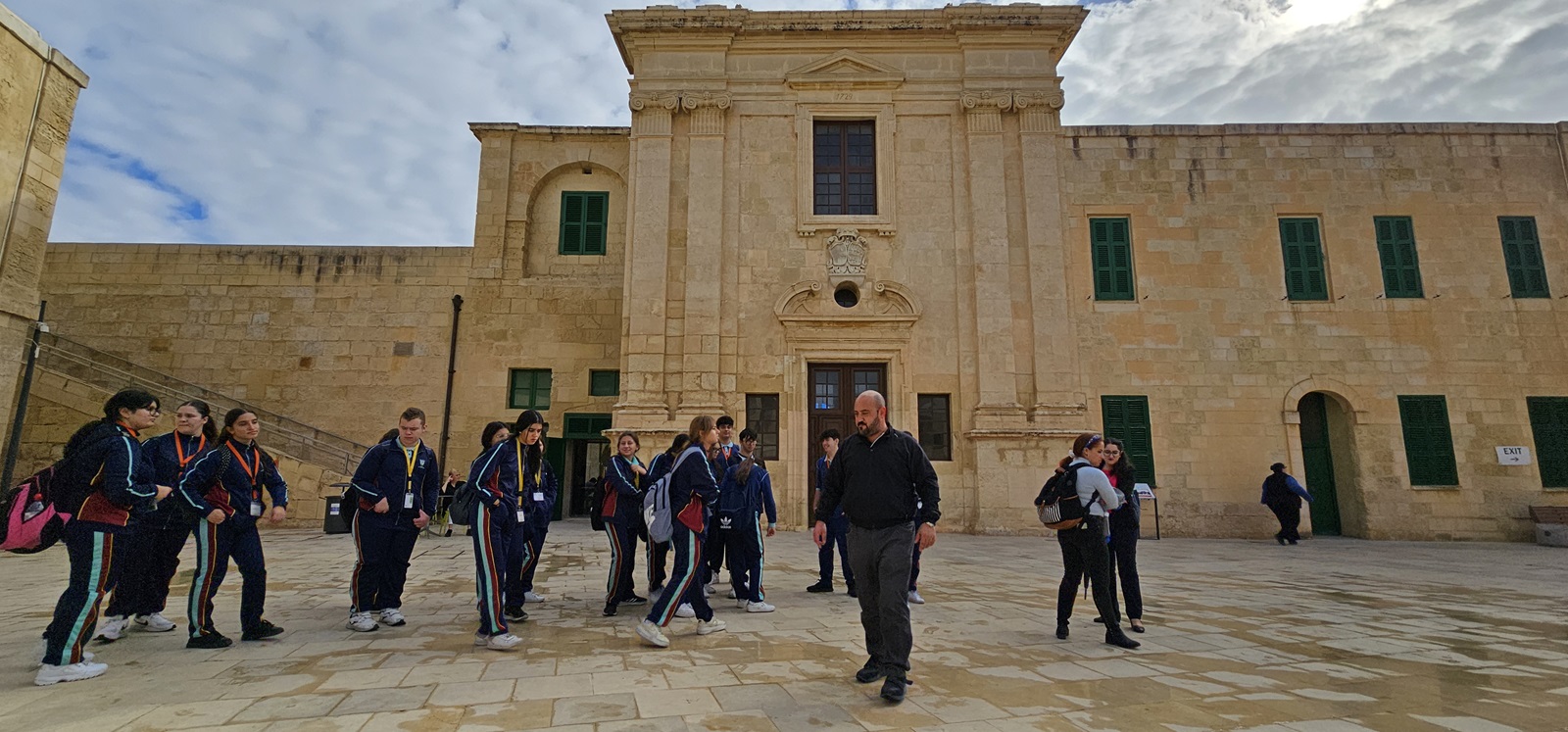Visit to EU funded sites for students
On November 29, SEM and Europe Direct Valletta, with the support of and in close collaboration with Heritage Malta, organised a visit for secondary school students to EU co-funded sites in Valletta.
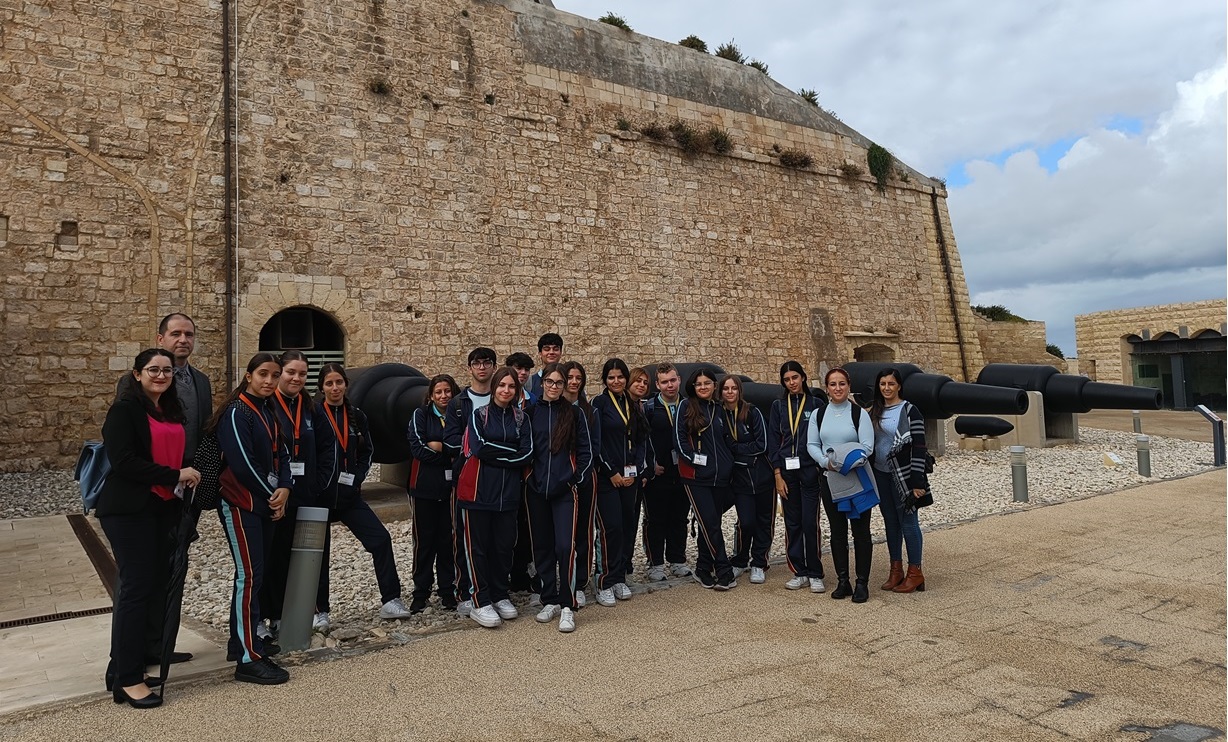
This visit was intended to raise awareness among students on how EU funds are invested in several areas and projects. Students from St Thomas More College, Santa Luċija Secondary School, visited MUŻA and Fort St Elmo, experiencing first-hand the ways in which EU funds transformed both sites.
The tour started at MUŻA, Malta’s new museum of art and flagship project for Valletta’s 2018 European Capital of Culture. The project consisted of a National-Community Museum, the first of its kind, being developed in a historic site, the Auberge d’Italie. The Museum is green powered, generating its energy requirements through renewable sources and represents a best practice in retrofitting a Maltese historic building.
Students were provided with a general insight of the main structural upgrades which literally transformed this site. The conservation and restoration of the Auberge d’Italie, a €9 million project which benefitted from EU funding through the European Regional Development Fund, proved to be a journey of discovery.
The students then walked all the way to the second site in programme, Fort St Elmo. This star-shaped fort was constructed in 1552, in a strategic location at the tip of the Sceberras peninsula to face and hold back the wrath of the Ottoman armada.
The students had the opportunity to experience the impressive grounds of the fort, including the splendid architecture of the two chapels dedicated to St Anne and were provided with detailed information on how EU funding helped in the regeneration of this site. The €15 million project, co-funded from the European Regional Development Fund, entailed the embellishment of Fort St Elmo’s heritage, including a Military History Museum and a rampart walk along Caraffa Enceinte. Historic buildings, structures and spaces have also been restored, helping to realise the full cultural and tourism potential of the site.
Students were invited to recount their experience by answering some questions related to how EU funds were invested in the sites they visited, how the projects changed the sites and in what ways does Malta benefit from EU funds.
